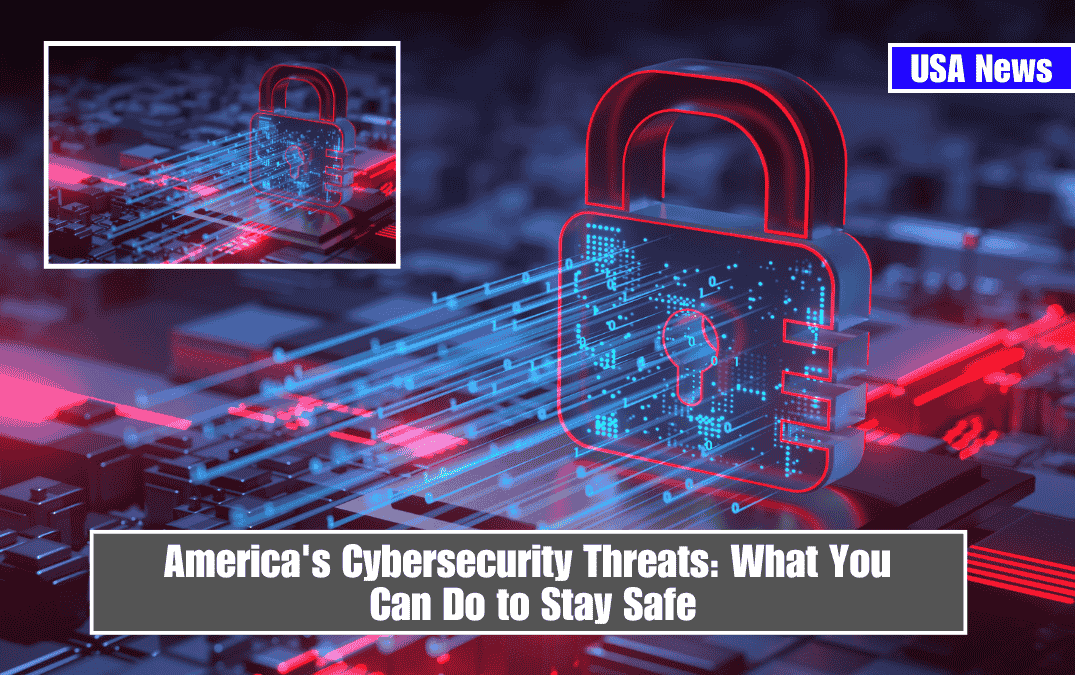Cybersecurity threats in 2025 are more sophisticated and pervasive than ever, impacting individuals, businesses, and governments. From ransomware to AI-driven attacks, the risks are evolving rapidly. Here’s an overview of the most pressing threats and practical steps you can take to stay safe.
Top Cybersecurity Threats in 2025
- AI-Powered Cyberattacks
Cybercriminals are leveraging artificial intelligence to craft adaptive phishing schemes, automate vulnerability detection, and bypass security measures in real time. These attacks are harder to detect due to their dynamic nature. - Ransomware
Ransomware remains a top threat, with attackers targeting critical infrastructure, healthcare systems, and financial institutions. Advanced techniques like double extortion—encrypting data and threatening to release it—are becoming more common. - Social Engineering
Social engineering exploits human psychology through phishing, whaling (targeting executives), and baiting scams. These attacks often lead to data breaches or financial losses by tricking individuals into revealing sensitive information. - Deepfake Technology
Deepfakes use AI to create realistic fake videos or audio, often for fraud or misinformation campaigns. Their increasing prevalence makes it difficult to distinguish between authentic and manipulated content. - Cryptojacking
This stealthy threat hijacks computer resources to mine cryptocurrency without the user’s knowledge, draining system performance and increasing energy costs. - Fileless Malware
Fileless malware operates in a system’s memory rather than being stored on the disk, making it harder for traditional antivirus software to detect. - IoT Vulnerabilities
The growing number of Internet of Things (IoT) devices presents new entry points for cybercriminals, as many of these devices lack robust security measures.
What You Can Do to Stay Safe
- Use Strong Passwords and Multi-Factor Authentication (MFA)
- Create unique passwords with a mix of letters, numbers, and special characters. Avoid predictable patterns like “123456” or personal details.
- Enable MFA on all accounts to add an extra layer of security through one-time codes or biometric verification.
- Be Vigilant Against Phishing Scams
- Verify email senders and avoid clicking on suspicious links or attachments. Look out for urgent requests that pressure you into acting quickly.
- Keep Software Updated
- Regularly update your operating systems, apps, and antivirus software to patch vulnerabilities that hackers exploit.
- Secure Your Network
- Use Virtual Private Networks (VPNs) when accessing public Wi-Fi, and consider installing firewalls and intrusion detection systems for added protection.
- Backup Your Data
- Regularly back up important files to encrypted cloud storage or external drives. This ensures you can recover your data in case of ransomware attacks or hardware failure.
- Limit Personal Information Sharing
- Be cautious about what you share online, especially on social media platforms, as attackers can use this information for targeted scams.
- Educate Yourself and Others
- Stay informed about emerging threats and best practices through cybersecurity training programs or resources provided by trusted organizations.
- Report Suspicious Activity
- If you encounter phishing attempts or unauthorized account activity, report it immediately to your service provider or IT team.
As cyber threats grow more advanced in 2025, staying vigilant is crucial. By adopting strong security habits—such as using MFA, updating software regularly, avoiding suspicious links, and securing your network—you can significantly reduce your risk of falling victim to cyberattacks. Building a proactive approach to cybersecurity will not only protect your personal information but also contribute to a safer digital environment for everyone.
SOURCES:-
[1] https://onlinedegrees.sandiego.edu/top-cyber-security-threats/
[2] https://www.embroker.com/blog/top-cybersecurity-threats/
[3] https://securityquotient.io/resource/advisories/cybersecurity-tips-for-end-users-to-stay-safe-in-2025/
[4] https://informationsecurity.wustl.edu/new-year-new-security-habits-refresh-your-digital-life-for-2025/
[5] https://www.cynet.com/advanced-threat-protection/top-6-cyber-attack-prevention-strategies-in-2025/










